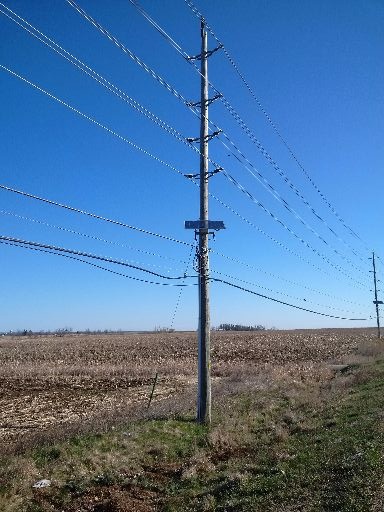
Uploaded on 2016-05-02 by PeterNormanSmith
Oil products @ 96.4 (Mt-oe) =55% Coal @ 19.3 (Mt-oe) =11% Natural Gas @ 60.4 (Mt-oe) =34% ![Energy Use Canada 2013 - Sankey Diagram][1] **2. Where are the dominant fossil fuels mainly used for in your country?** Allowing for conversion of fossil fuels to electricity and their subsequent use by sectors: Industry 36.8 (Mt-oe) =21% Transport 59.2 (Mt-oe) =34% Other 56.5 (Mt-oe) =32% Non-energy use 23.6 (Mt-oe) =13% **3. Proposed policies** *Encourage deployment of renewable-source electricity generation* through use of enhanced 'feed-in-tariff' rates. The cost of photo-voltaic panels has come down significantly over the past few years, so the enhanced rates required to encourage investment would be relatively low. In the following photo, the local electricity distributor has installed a large number of photo-voltaic panels on utility poles across the municipality. These feed directly into the low-voltage part of the circuits lowering the losses normally incurred in electricity distribution. ![Photo-voltaic panels on utility poles][2] The following photo shows a wind generator in the heart of Toronto at the Canadian National Exhibition grounds. It generates power but is primarily a symbol of a desire to move to renewable energy sources. ![Wind generator at Canadian National Exhibition][3] *Retire coal powered generation stations* and replace them with generation powered either by natural gas or bio-fuels. Canada has a large number of pine trees that have been killed by Pine Beetle infestation - due to warming temperatures the beetles are no longer killed off during Winter - and these could be used for bio fuels, with replacement trees planted. ![Halton Hills Generating Station - Natural Gas][4] The station is not in use at the time of the photo. Emissions of NOx can be seen from the chimneys during operation and it emits large volumes of CO2, so is not an ideal solution, but a step beyond coal towards a low carbon future. Encourage investment in *small scale hydro-electric generation* using run-of-river techniques rather than large scale damming of rivers. This has a smaller ecological impact on native species. In the photo below, there is a weir across the river below the bridge that diverts sufficient flow to power two generators at the bottom of the falls without stopping flow. ![Community-based hydro-electric generation @ Almonte, Ontario][5] [1]: https://edxuploads.s3.amazonaws.com/14622039595699078.png [2]: https://edxuploads.s3.amazonaws.com/14622046643335938.jpg [3]: https://edxuploads.s3.amazonaws.com/1462205479266797.jpg [4]: https://edxuploads.s3.amazonaws.com/14622050927383909.png [5]: https://edxuploads.s3.amazonaws.com/14622057712722182.jpg